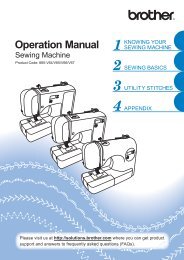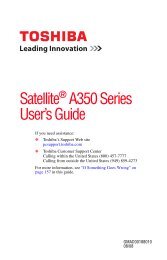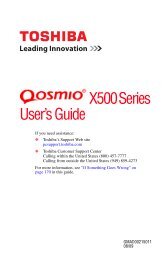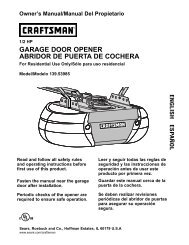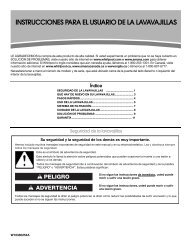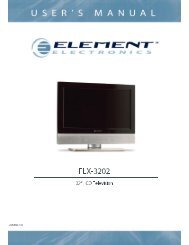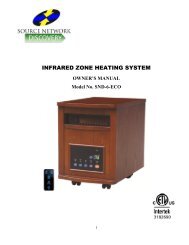Satellite® T210/T230 Series User's Guide - Howard Computers
Satellite® T210/T230 Series User's Guide - Howard Computers
Satellite® T210/T230 Series User's Guide - Howard Computers
You also want an ePaper? Increase the reach of your titles
YUMPU automatically turns print PDFs into web optimized ePapers that Google loves.
170 If Something Goes Wrong<br />
Disk or storage drive problems<br />
Small bright dots appear on your TFT display when you turn<br />
on your computer.<br />
Small bright dots may appear on your screen display when you<br />
turn on your computer. Your display contains an extremely large<br />
number of thin-film transistors (TFT) and is manufactured using<br />
high-precision technology. Any small bright dots that may appear<br />
on your display are an intrinsic characteristic of the TFT<br />
manufacturing technology. Over a period of time, and depending on<br />
the usage of the computer, the brightness of the screen will<br />
deteriorate. This is also an intrinsic characteristic of the screen<br />
technology. When the computer is operated on battery power, the<br />
screen will dim and you may not be able to increase the brightness<br />
of the screen while on battery power.<br />
Disk or storage drive problems<br />
Problems with the storage drive usually show up as an inability to<br />
access the drive or as sector errors. Sometimes a drive problem may<br />
cause one or more files to appear to have garbage in them. Typical<br />
problems are:<br />
You are having trouble accessing a drive, or one or more files<br />
appear to be missing.<br />
Make sure you are identifying the drive by its correct name<br />
(A: or C:).<br />
Error-checking<br />
NOTE<br />
This feature is not available for optical disc drives.<br />
Run Error-checking, which analyzes the directories and files on the<br />
storage drive and repairs any damage it finds.<br />
To run Error-checking:<br />
1 Click Start, and then Computer.<br />
2 Right-click the drive you want to check.<br />
3 On the pop-up menu, click Properties.<br />
The drive’s Properties box appears.<br />
4 Click the Tools tab.<br />
5 Click the Check now... button.<br />
The Check Disk box appears.



